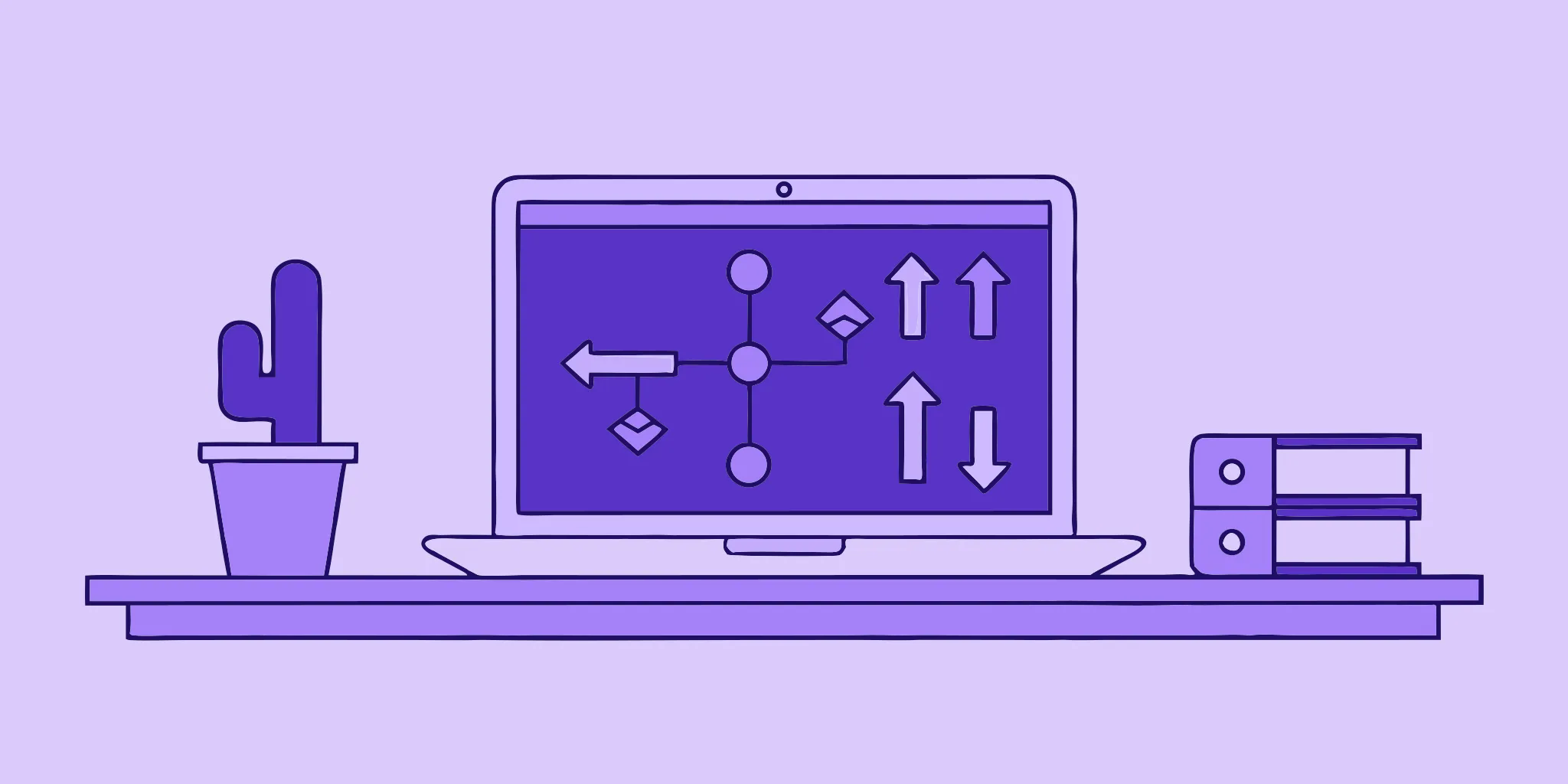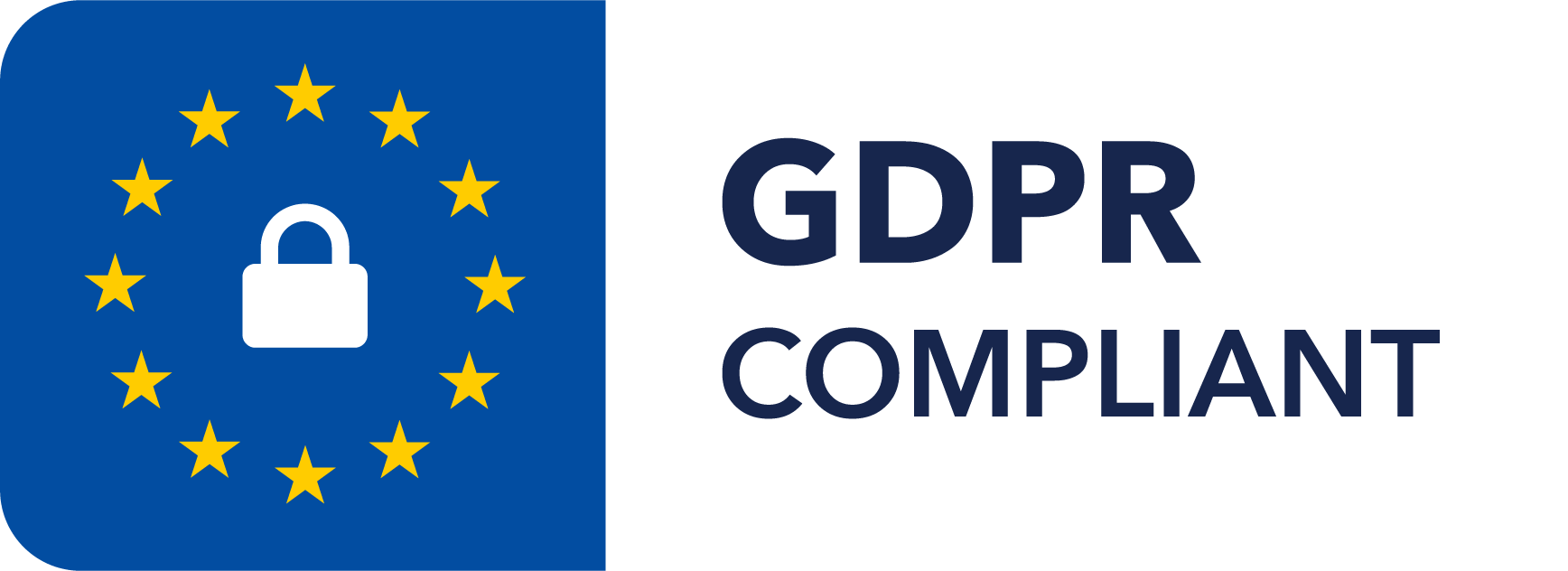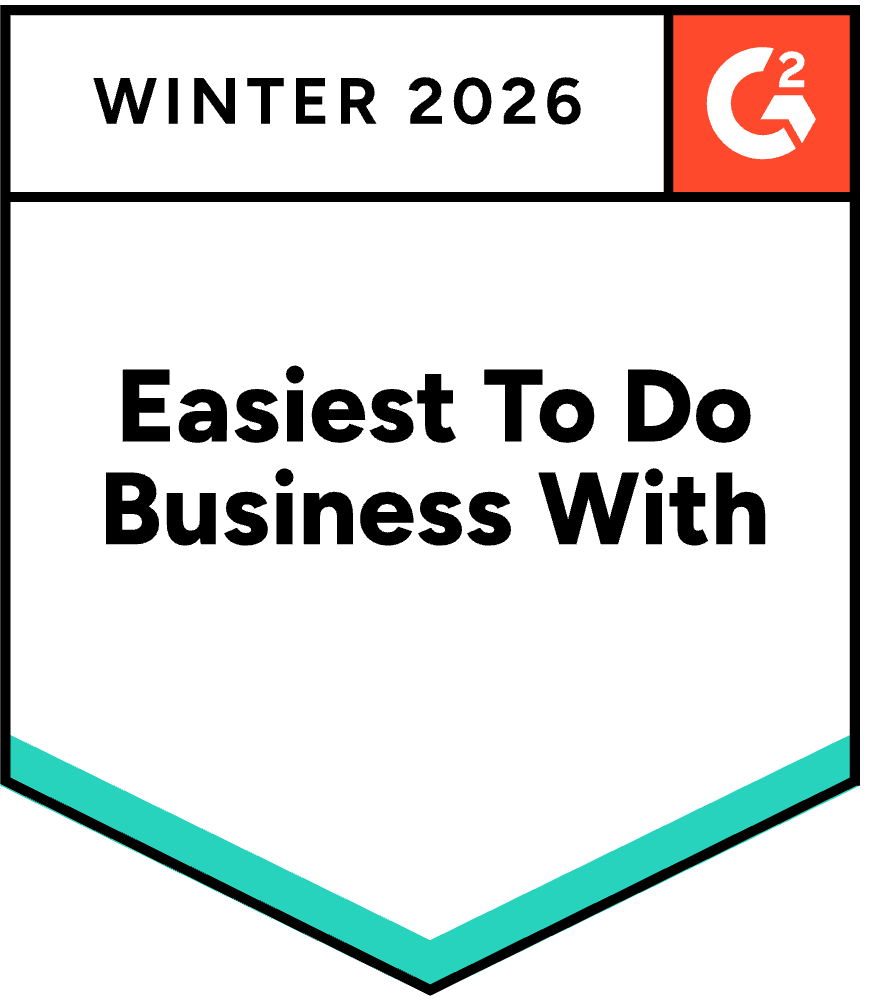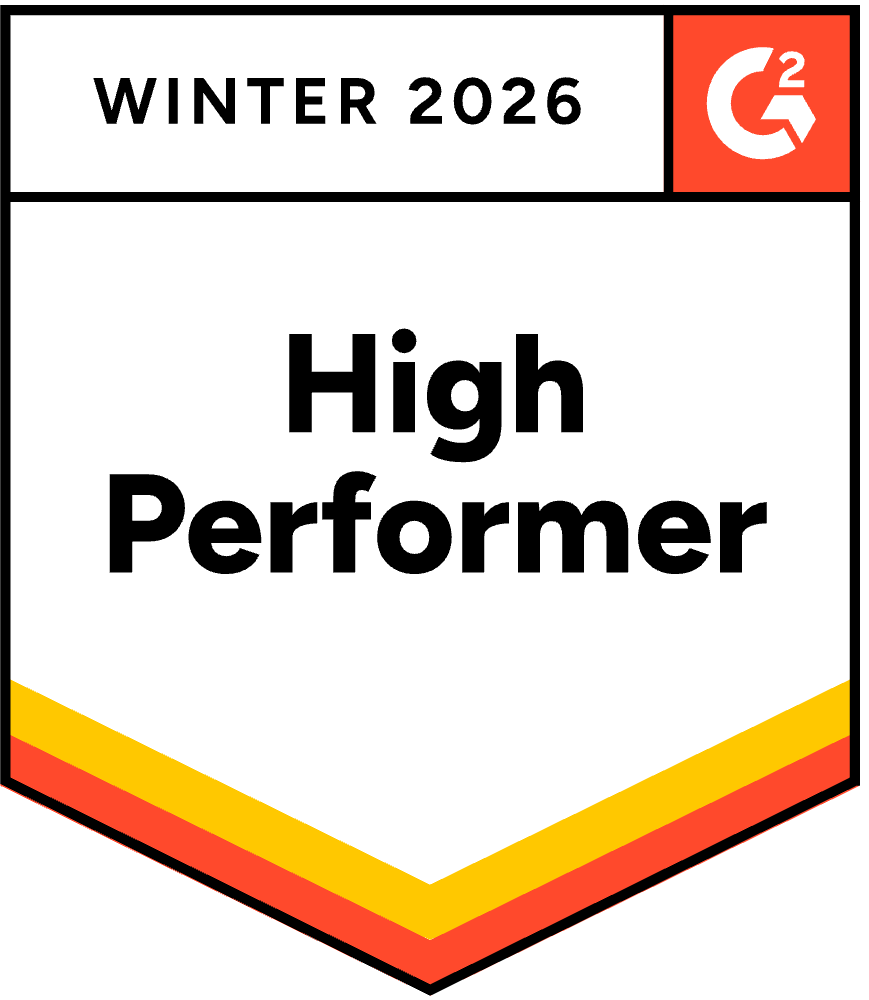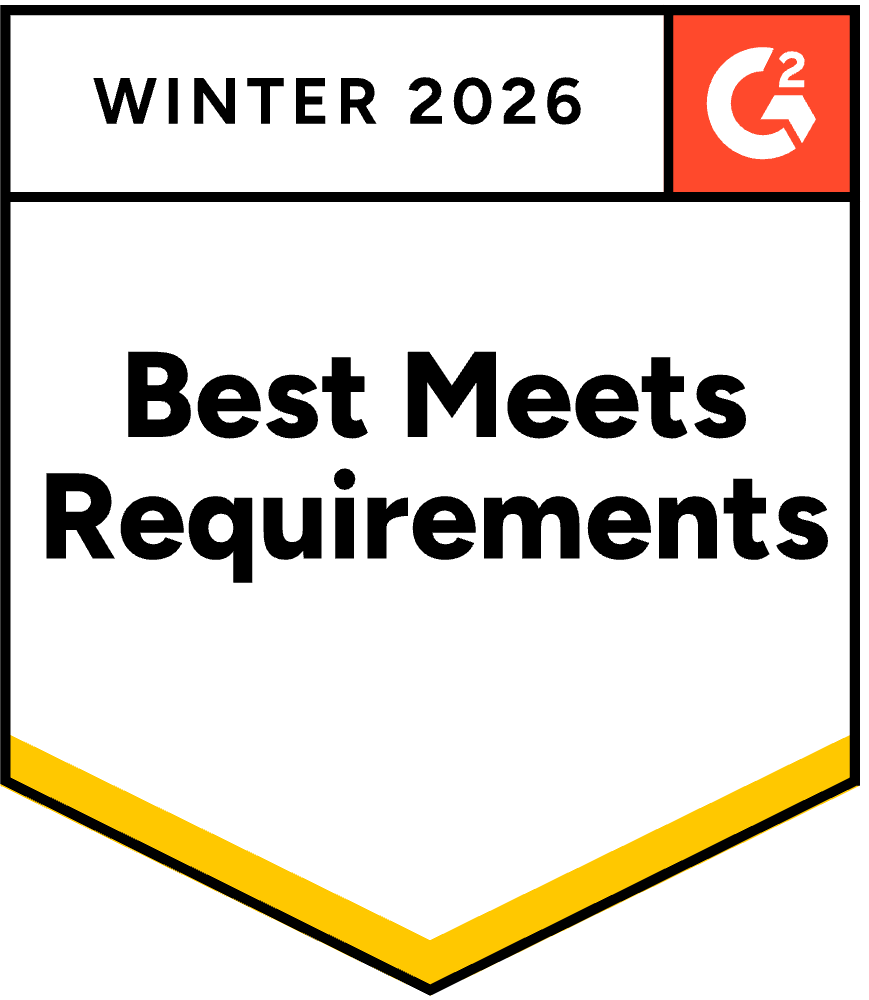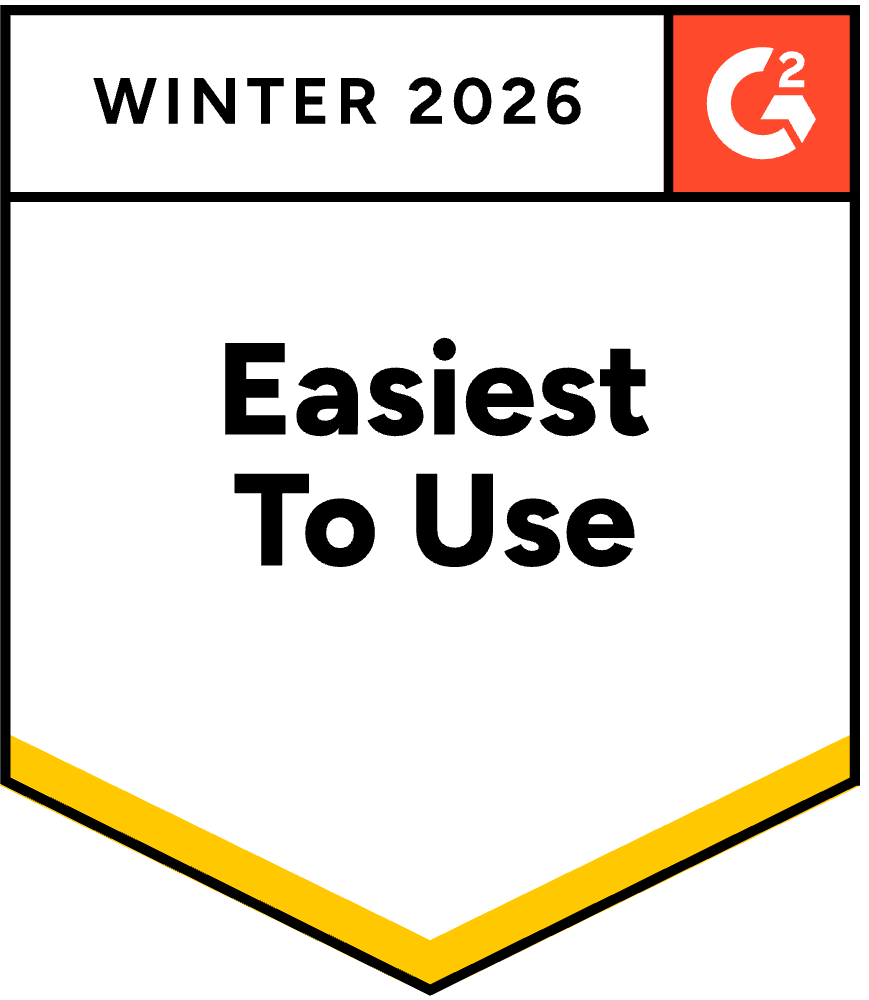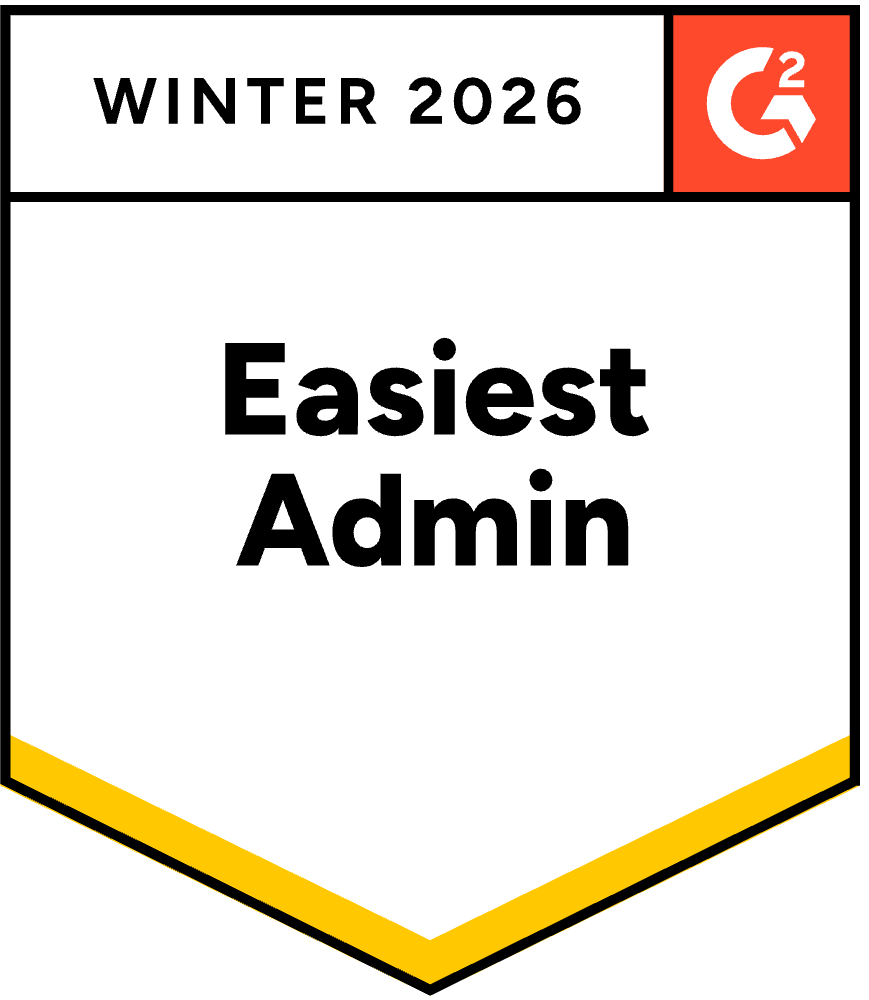Best AI RFP Software 2025: 12 Platforms Compared [Guide]
August 7, 2025
By
Evie Secilmis
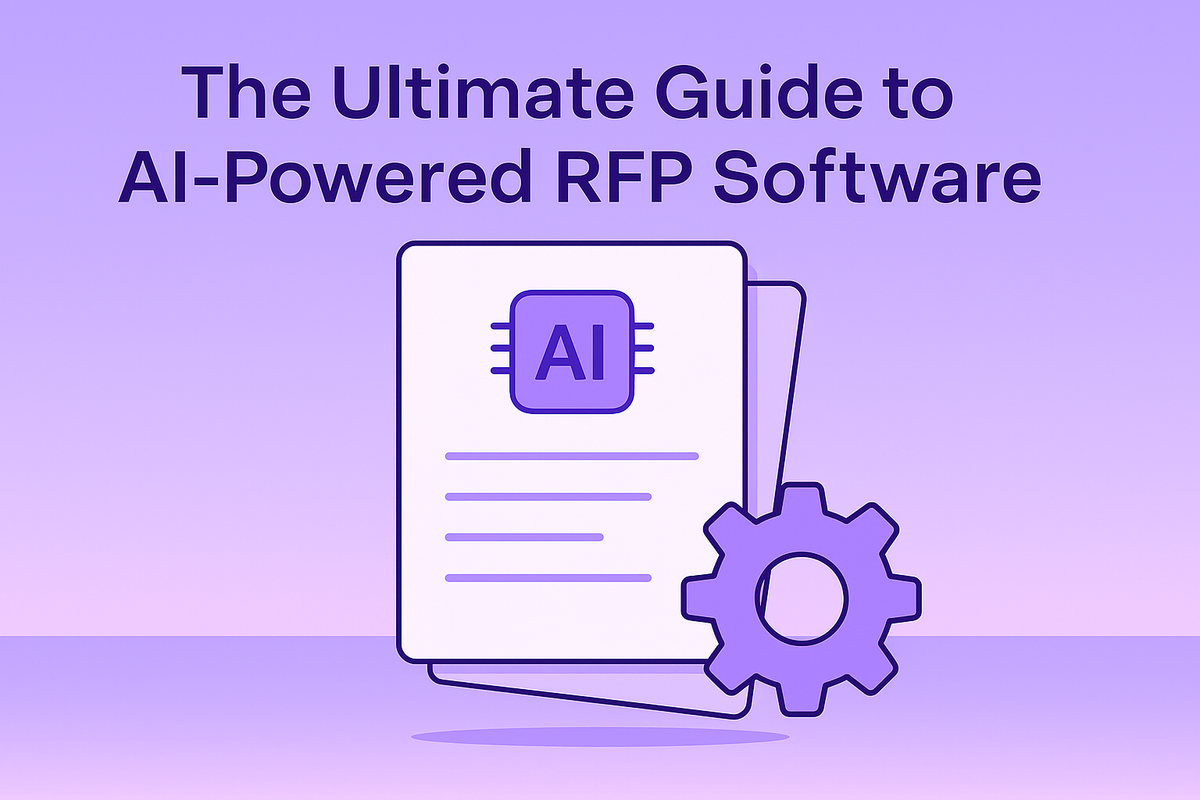
Let’s be honest: the traditional RFP process can be a real grind. It’s an administrative race against the clock that pulls your most talented people away from strategic work. Instead of crafting a winning strategy, they're stuck hunting for answers in shared drives. This is where AI RFP software and modern rfp tools completely changes the game. The right rfp ai tools act as a central intelligence hub. They use generative AI to instantly draft accurate first-pass answers, transforming your ai rfp process from a manual chore into a strategic advantage. It’s not about replacing your team; it’s about empowering them to work smarter, not just faster.
Finding the leading ai rfp software and rfp tools for RFP responses means transforming this manual marathon into a streamlined, intelligent workflow. By leveraging AI, your team can focus on strategic customization, improving quality, and increasing win rates. This guide walks you through everything from must-have features to pricing and security considerations so you can choose the right rfp platform for your business.
Key Takeaways
- Look beyond speed and focus on features that improve quality: The best tools provide intelligent knowledge management, smart AI drafting, and seamless collaboration, freeing your team to concentrate on strategy and client-specific customization.
- Demand non-negotiable security and data privacy: Company data is a critical asset. Choose a platform with verifiable certifications like SOC 2 or ISO 27001 and policies ensuring your information is never used to train public AI models.
- Successful adoption is about process, not just the platform: To achieve ROI, you need to implement new workflows, organize your content library strategically, train your team, and track analytics to continuously improve performance.
- Consider integrations and scalability: Your RFP tool should work seamlessly with your existing tech stack (CRM, cloud storage, collaboration tools) and scale with your team as your business grows.
What Should You Look for in AI RFP Software?
Choosing the right RFP AI tool isn’t just about speed—it’s about improving the quality of your responses, saving time, and ultimately winning more deals. The best platforms act as a partner to your sales and proposal teams, helping you put your best foot forward every time.
How AI Transforms the RFP Process
Traditional RFP workflows are labor-intensive. Teams spend hours hunting for the right answers, consolidating information, and maintaining version control. AI flips that script.
A top RFP AI solution can generate a first draft in minutes by pulling the most relevant information from your content library, including past RFPs, security questionnaires, and internal documentation. This introduces consistency across responses and frees your team to focus on strategy, client engagement, and proposal customization.
Example: Imagine receiving a government RFP with 200 questions. Instead of spending days gathering answers, an AI-powered tool like HeyIris.ai can draft 80% of the responses within an hour, letting your team refine and customize the remaining 20% for maximum impact.
Must-Have Features That Win More Deals
- Powerful AI engine: Generates high-quality, accurate drafts instantly.
- Smart knowledge library: Centralizes past RFPs, security documents, and other key content.
- Collaboration tools: Allow real-time editing, review, and approval across teams.
- Deep customization: Tailor every proposal to the client’s specific requirements.
- Integration with your tech stack: Connects with CRMs like Salesforce, cloud storage, and collaboration tools.
- Analytics and reporting: Track win rates, response times, and content usage to continuously improve processes.
These features ensure that your AI tool doesn’t just speed up work—it enhances quality, consistency, and strategy.
Why Security and Compliance Are Non-Negotiable
Your RFP responses contain sensitive company information, pricing, and strategic data. A trustworthy AI-powered RFP tool must:
- Have robust security certifications (SOC 2, ISO 27001)
- Keep your data separate from other customers
- Provide secure sharing features for clients
- Offer clear privacy policies, ensuring data isn’t used for public AI training
Tip: Always request the provider’s trust documentation or whitepaper to verify their security posture.
Comparing the Top AI Tools for RFP Responses
Choosing the right ai rfp software and rfp tools can feel overwhelming. Below is an expanded look at top rfp platforms, highlighting features, ideal team size, and best use cases.
HeyIris.ai
Scenario: A SaaS company handling multiple enterprise RFPs weekly can rely on HeyIris.ai to reduce initial drafting time by up to 70%, freeing sales teams to focus on high-value customization.
Loopio
Responsive (Evolution of RFPIO)
Key Performance Metrics
Numbers don't lie. When you're evaluating a tool, the performance metrics tell a powerful story about its real-world impact. The leading AI RFP platforms deliver tangible business outcomes that go far beyond just saving a few hours. For instance, some proposal managers report delivering responses up to 80% faster, while one company even saved an incredible 21,100 hours in response time. This isn't just about speed; it's about reclaiming your team's time for strategic thinking. A great tool can improve your team's overall efficiency by over 70% and, most importantly, has been shown to increase win rates by 50% or more.
User Ratings and Recognition
Social proof is a powerful indicator of a platform's reliability and effectiveness. Before committing, see what current users are saying on trusted review sites like G2, Capterra, and Gartner. Top-tier tools consistently earn high marks; for example, it's common to see ratings of 4.5 stars or higher from hundreds, or even thousands, of reviews. Accolades like being named the #1 RFP response software on G2 for multiple years in a row signal consistent market leadership and customer satisfaction. These customer stories and ratings give you confidence that the software delivers on its promises and is backed by a supportive, responsive team.
Ombud / Qvidian
AutoRFP.ai
User Ratings and Recognition
When you're vetting software, user ratings are your window into real-world performance. They show you how a platform holds up under the daily pressure of deadlines and complex proposals. High marks on sites like G2 and Capterra are a strong signal that a tool delivers on its promises and provides reliable support. For example, established platforms like Responsive and Loopio consistently earn high ratings from thousands of users. This kind of widespread approval often points to a mature product with robust features and a proven track record in helping teams manage their response process effectively.
Beyond the big names, it's also worth looking at what users value in more specialized, AI-native platforms. While a large volume of reviews indicates market presence, glowing feedback for specific features can highlight a tool's unique strengths. For instance, some tools earn top marks for their sheer speed in generating drafts. Others, like HeyIris.ai, are praised for the quality and accuracy of their AI-generated content and their ability to proactively manage knowledge. This focus on accuracy ensures that speed doesn't come at the cost of quality, which is a critical factor for teams aiming to win complex, high-stakes deals.
Conveyor
Inventive.ai
Inventive.ai is built for revenue teams and proposal managers who need advanced AI capabilities to manage complex RFPs and secure a competitive advantage. The platform is centered around its "AI RFP Agent," a proprietary system designed to accelerate the drafting process without compromising on accuracy. It’s a solid option for teams looking to use sophisticated AI to not only speed up their workflow but also improve the strategic quality of their submissions. Their core focus is on transforming the RFP process into a clear revenue driver through intelligent automation and data-supported responses.
Performance and Win Rate Data
Inventive.ai supports its platform with some impressive performance metrics, highlighting major efficiency gains and improved outcomes for its clients. For instance, one customer achieved a 50% higher win rate and delivered RFP responses 90% faster after implementing the software. This is largely credited to an AI engine that can produce first drafts 10 times faster than manual methods. For teams using the platform, this translates into a productivity increase of over 70%, freeing up valuable time for strategic review and client-specific customization instead of tedious information gathering.
Which Features Matter Most for RFP Success?
It's not about having the most features in your rfp tools it's about having the right ones in your rfp platform.
1. Generate Content and Draft Responses Instantly
Top platforms like Conveyor and Loopio pull information from past responses to build complete first drafts in minutes.
Benefit: Respond faster, handle more opportunities, and dedicate more time to customization.
Advanced Writing Assistance
The best AI tools go beyond simple copy-and-paste. Think of them as a writing partner that helps refine your tone, ensure consistency, and improve clarity. A top-tier solution can generate a complete first draft in minutes by pulling the most relevant information from your content library, which includes past RFPs, security questionnaires, and internal documentation. This process introduces a consistent voice across all your responses and, more importantly, frees your team to focus on high-level strategy, client engagement, and the thoughtful customization that truly makes a proposal stand out.
Multi-Language Capabilities
For global companies, language barriers can be a significant hurdle in the sales process. Manually translating RFPs and responses is slow, expensive, and prone to error. Modern AI RFP software eliminates this obstacle by offering built-in translation and response generation in dozens of languages. This capability allows your team to confidently pursue international opportunities without needing a dedicated translation department. It opens up new markets and ensures you can communicate your value proposition clearly and accurately, no matter where your next big deal is located.
2. Manage Your Knowledge Base
- Transform static folders into dynamic, AI-managed libraries.
- Tools like DeepRFP proactively flag outdated content.
- Ensure answers are always accurate, consistent, and approved.
Continuous AI Learning
The most powerful AI RFP tools don’t just store your information; they learn from it. This is the core of continuous learning. With every response you complete and every answer you approve, the AI becomes more attuned to your company’s voice, technical specifications, and winning strategies. It analyzes millions of data points—from past Q&A pairs to successful proposals—to refine its suggestions over time. This transforms your content library from a static repository into a dynamic, intelligent asset. Instead of just pulling old answers, the system generates drafts that are increasingly accurate and customized. Platforms like HeyIris.ai use this capability not only to create first drafts in minutes but also to proactively identify and flag outdated information, ensuring your knowledge base evolves with your business.
3. Collaborate Seamlessly
- Assign questions, track progress, and automatically tag SMEs.
- Centralized workflows prevent version control issues.
4. Ensure Quality and Accuracy
- Built-in AI quality checks compare responses against past wins.
- Refine clarity, catch errors, and maintain compliance.
5. Integrate with Your Tech Stack
- CRM (Salesforce), Slack/Teams, Google Drive/SharePoint.
- Reduce manual entry, create unified workflows.
6. Customize Workflows and Templates
- Train AI on company-specific documents.
- Automate compliance checks, risk analysis, and workflow approvals
Case Studies: See real-world examples of how companies have successfully customized workflows and templates to improve response time, maintain compliance, and increase win rates. For instance:
- TechCo: Training their AI on company-specific legal and technical documents reduced RFP draft time by 40% while maintaining full compliance.
- HealthSolutions: Automating workflow approvals and risk analysis cut review cycles from 5 days to 1 day, enabling faster RFP responses.
- FinServe Inc.: Custom templates trained on internal knowledge improved answer consistency across departments, boosting win rates by 15% in six months.
How Much Does AI RFP Software Cost?
Enterprise Plans
- Custom pricing, annual contracts.
- Supports hundreds of complex RFPs.
- Recommended top RFP AI solutions for high-volume enterprise use.
Example: Loopio Pricing
When you're evaluating a well-known AI RFP tool like Loopio, getting a clear picture of the investment is key for your budget and planning. Loopio doesn't list its prices publicly, so you'll need to get a custom quote based on your team's specific needs. Based on available data, the typical annual cost for Loopio is around $22,786. However, this can range from $11,682 to $55,704, depending on how many users you have and the scale of your usage.
It's also smart to factor in potential one-time costs for implementation. Getting your team set up and properly trained can add anywhere from $5,000 to $50,000. While that might seem like a lot, this initial investment is what ensures your team can actually use the platform effectively and get the most out of its features from day one.
Don't forget that there's often room to negotiate. Buyers who discuss pricing with vendors can typically save around 9% on their contracts. When you're calculating the numbers, be sure to think about the total cost of ownership—not just the subscription fee, but also the setup, training, and any future needs. For a more detailed breakdown, you can review this analysis of Loopio's pricing structure.
Mid-Market Companies
- Transparent per-user monthly/annual pricing.
- AI features may be add-ons.
- Best for teams seeking efficiency without overspending.
Small Businesses
- Affordable, fast setup (~$50/month).
- High-quality responses without complex implementation.
Calculating ROI
- Automates repetitive tasks, increases win rates.
- Enables teams to handle more RFPs with fewer resources.
Hidden Costs
- Initial setup and AI training.
- Implementation can take weeks; some tools don’t offer free trials.
Common Additional Fees
When you're budgeting for AI RFP software, the subscription price is just the starting point. Don't get caught by surprise—the total cost of ownership often includes several other expenses. Many vendors charge for initial setup, implementation, and team training, which can add a significant amount to your first-year investment. According to industry analysis, these onboarding fees can range from $5,000 to $50,000, depending on the complexity of your needs. You might also find that certain essential features, like advanced integrations with your CRM or cloud storage, come at an extra cost. Be sure to ask for a complete breakdown of all potential fees before you sign on the dotted line.
Negotiating Your Contract
Once you have the full price picture, it’s time to negotiate. You have more leverage than you might think, and a few strategic moves can lead to significant savings. First, consider your timing. Sales teams are often most flexible at the end of a financial quarter or year when they're trying to hit their targets. You can also ask about discounts for longer-term commitments, like a multi-year contract, or for purchasing a larger number of user licenses. Come to the conversation prepared with pricing from competitors to strengthen your position. A little bit of negotiation can go a long way—buyers who discuss their contracts often save around 9% on their final price.
Tips for a Better Deal
To secure the best possible deal, shift your focus from the monthly subscription to the long-term value. Start by calculating the Total Cost of Ownership (TCO), factoring in all the potential fees we discussed—setup, training, integrations, and future renewals. Next, evaluate the software's potential Return on Investment (ROI). Will this tool genuinely help you win more business and make your team more efficient? The right platform should pay for itself by increasing your win rates and freeing up your team to handle more proposals. By building a clear business case, you can confidently invest in a solution that delivers measurable results, making the cost a strategic advantage rather than just an expense.
Best Practices for Using Your AI RFP Tool
AI rfp software and rfp tools are more than just a platform they're a new way of working for your entire team. Simply buying a subscription won't automatically lead to more wins. The real value comes from thoughtful implementation and consistent use. To get the best results, you need to integrate the tool into your daily workflows, keep your content in top shape, and empower your team to use it with confidence. Think of it as building a high-performance engine for your sales process. It requires a bit of setup and maintenance, but the speed and power you get in return are well worth the effort.
Here’s how you can make sure your investment pays off and turns your RFP process into a competitive advantage.
1. Nail Your Initial Setup
The first step is to get your new tool properly configured for your team’s specific needs. This goes beyond just importing your existing content. A proper setup involves:
- Integrating the software with your current systems
- Establishing clear workflows
- Automatically tagging the right subject matter experts when their input is needed
Take the time to define user roles and permissions, ensuring everyone has the access they need without feeling overwhelmed. This initial investment of time will create a solid foundation for faster, more accurate responses down the line.
2. Build an Organized and Effective Content Library
Your AI tool is only as smart as the information you give it. A well-organized content library is the key to generating high-quality, accurate answers for every proposal. Best practices include:
- Treating the library as a dynamic resource, not just a filing cabinet
- Grouping top-performing answers by product, service, or industry
- Using clear and consistent tagging to make information easy to find
- Maintaining a central knowledge library for fast retrieval of approved content
- Regularly reviewing and updating your content to remove outdated information and refine messaging
This ensures your AI always has the most accurate and up-to-date material, improving both speed and quality of your RFP responses.
3. Track Your Performance and Refine Your Process
You can’t improve what you don’t measure. The best AI RFP tools provide analytics that give valuable insights into your response process. To get the most from your data:
- Monitor metrics like win rate, response time, and most-used content
- Identify bottlenecks and inefficiencies in your workflow
- Understand what makes a winning proposal for your business
- Use AI intelligence features to analyze responses against thousands of winning bids
These insights allow your team to continuously refine strategy, strengthen answers, and improve deal volume and win rates.
4. Empower Your Team with Proper Training
Technology works best when it empowers people, not replaces them. Effective team training is critical for successful adoption. Key steps include:
- Demonstrating how the tool supports the team and makes jobs easier
- Holding hands-on training sessions and creating a central resource for questions
- Appointing an internal champion to encourage good habits and adoption
- Setting guidelines for reviewing and editing AI-generated drafts to ensure alignment with your company’s voice
By focusing on confidence-building and best practices, you’ll ensure the whole team uses the tool to its full potential, maximizing your ROI.
AI RFP Software Security: What You Need to Know
Let’s talk about the elephant in the room: security. Handing over your company’s sensitive information, customer data, and proprietary solutions to an AI tool can feel risky—and you’re right to be cautious. When dealing with RFPs, you’re handling the very core of your business strategy. Security isn’t just a feature in an AI RFP tool—it’s the foundation everything else is built on. A breach or leak could be catastrophic.
Before committing to any platform, ensure it has ironclad security protocols. Look beyond marketing claims and check for concrete evidence of data protection, privacy controls, and industry compliance. Here’s what to ask:
Key Data Protection Standards to Look For
Ask what happens to your data. Your company’s information should never be used to train public AI models. A trustworthy platform will explicitly confirm this.
For example, Loopio states, "Loopio does not use your company's data or content to train its AI models." This isn’t just a feature—it’s a fundamental promise. Proprietary information should only generate responses for you, keeping your competitive advantage intact.
Vendor-Specific Infrastructure
A vendor’s privacy policy is a great start, but their technical infrastructure is where the real protection happens. A secure platform keeps your data completely separate from other customers—both physically and digitally. Think of it like having your own private vault that no one else has the key to. This separation is what prevents any accidental mix-ups or unauthorized access, which is absolutely essential when you're handling sensitive proposal details. You should always look for vendors who can prove their infrastructure is solid with recognized security certifications like SOC 2 or ISO 27001. These independent audits confirm that a company follows strict rules for managing and securing customer data, giving you peace of mind that their platform is built on a foundation of trust.
What to Look for in Privacy Controls
Go beyond data handling policies—choose tools that give you direct control over your information. You should be able to manage who sees what, internally and externally.
Secure document sharing is a vital privacy control. Conveyor notes, "It makes it much easier and more secure to share important security documents with customers." This ensures your data remains in the right hands.
Features That Help You Manage and Mitigate Risk
Choosing a secure AI tool is part of your risk management strategy. The main risk is a data breach, potentially exposing pricing, technical solutions, or client information. Platforms that guarantee your data isn’t used for public AI training significantly reduce this exposure.
Maintaining Compliance with Industry Regulations
If you operate in regulated industries like finance, healthcare, or government, compliance is non-negotiable. Look for certifications like SOC 2 or ISO 27001, which show a commitment to rigorous security practices. Conveyor, for instance, is ISO 27001 certified and ensures "your data is kept separate." Third-party validation provides peace of mind and proves the vendor has a mature security program.
What's Next for AI in RFP Management?
AI is evolving fast, and its role in RFP processes is growing daily. Understanding its trajectory helps you choose the right tool today and prepare for tomorrow.
The Current State of AI for RFPs
AI RFP tools are powerful assistants that handle the heavy lifting of proposal creation. Think of them as force multipliers, not replacements. They create consistent, detailed, and accurate responses by drawing from your knowledge base in seconds. This automation frees your team from repetitive tasks, allowing them to focus on:
- Building client relationships
- Fine-tuning strategy
- Making high-level decisions
The primary benefits today are time savings and increased precision, helping your team handle more deals without burning out.
Understanding Generative AI
So, what exactly is "generative AI" in this context? At its core, it’s a type of artificial intelligence that can create new content—like text, images, or in our case, RFP responses. Instead of just analyzing data, it generates something original based on the information it has learned. For sales teams, this technology acts as a powerful assistant that handles the heavy lifting of proposal creation. Think of it as a force multiplier, not a replacement for your team's expertise. It creates consistent, detailed, and accurate responses by drawing from your knowledge base in seconds, giving your experts more time to focus on strategy and customization.
Types of Artificial Intelligence
To really appreciate how these tools work, it helps to know that not all AI is the same. Broadly, artificial intelligence helps us do things faster and better, solving real-world problems in countless fields. The AI used in RFP software is a practical application designed to make a complex business process more efficient. It’s not about creating a machine that thinks like a human; it’s about building a tool that can perform specific, repetitive tasks with incredible speed and accuracy. This allows your team to offload the tedious parts of the job and concentrate on what they do best: building relationships and closing deals.
Limited Memory Machines
Most of the AI tools you use today, including sophisticated RFP software, fall into the category of "limited memory machines." These AI systems can look at past information for a short time to make decisions. They get smarter as they get more data to learn from. In the world of RFPs, this means the AI analyzes your entire knowledge library—every past proposal, security questionnaire, and approved answer—to generate the most relevant draft for a new request. The more high-quality information you feed it, the more accurate and helpful its suggestions become, continuously improving its performance over time.
Future AI Concepts (Theory of Mind & Self-Awareness)
You might hear buzz about AI that can understand emotions or have consciousness, but that type of AI does not exist yet; it's still a theory for the future. Concepts like "Theory of Mind" AI, which could understand that people have their own thoughts and feelings, are purely speculative for now. The AI in today's RFP tools is highly advanced but focused on a specific task. It doesn't "understand" the proposal in a human sense. Instead, it excels at pattern recognition and information retrieval, making it an incredibly effective tool for the job it’s designed to do.
Emerging Capabilities to Watch For
AI is becoming more predictive and integrated. Future tools won’t just respond—they will anticipate roadblocks or opportunities within the procurement process. Seamless connections to CRMs or contract management software will create a unified, intelligent workflow across the sales cycle.
This interoperability allows your RFP tool to have deeper context, resulting in smarter, more strategic responses informed by data from every stage of the customer journey.
How AI Will Shape the Proposal Industry
As adoption increases, expectations for proposals are rising. The focus is shifting from speed and efficiency to quality and customization. AI helps teams create compelling, tailored documents for specific client needs rather than generic answers. Advanced AI platforms ensure every proposal is your absolute best work, aligned with industry best practices.
The Future of AI-Powered Proposal Management
AI RFP tools will continue to learn and improve through continuous feedback. Each completed RFP helps refine the AI’s understanding, improving the quality and relevance of future suggestions.
For sales teams, this means sustainable competitive advantages, with time savings and quality improvements compounding over time. To explore this evolution further, see our whitepaper on AI in the deal desk .
Related Articles
Share this post
Link copied!




